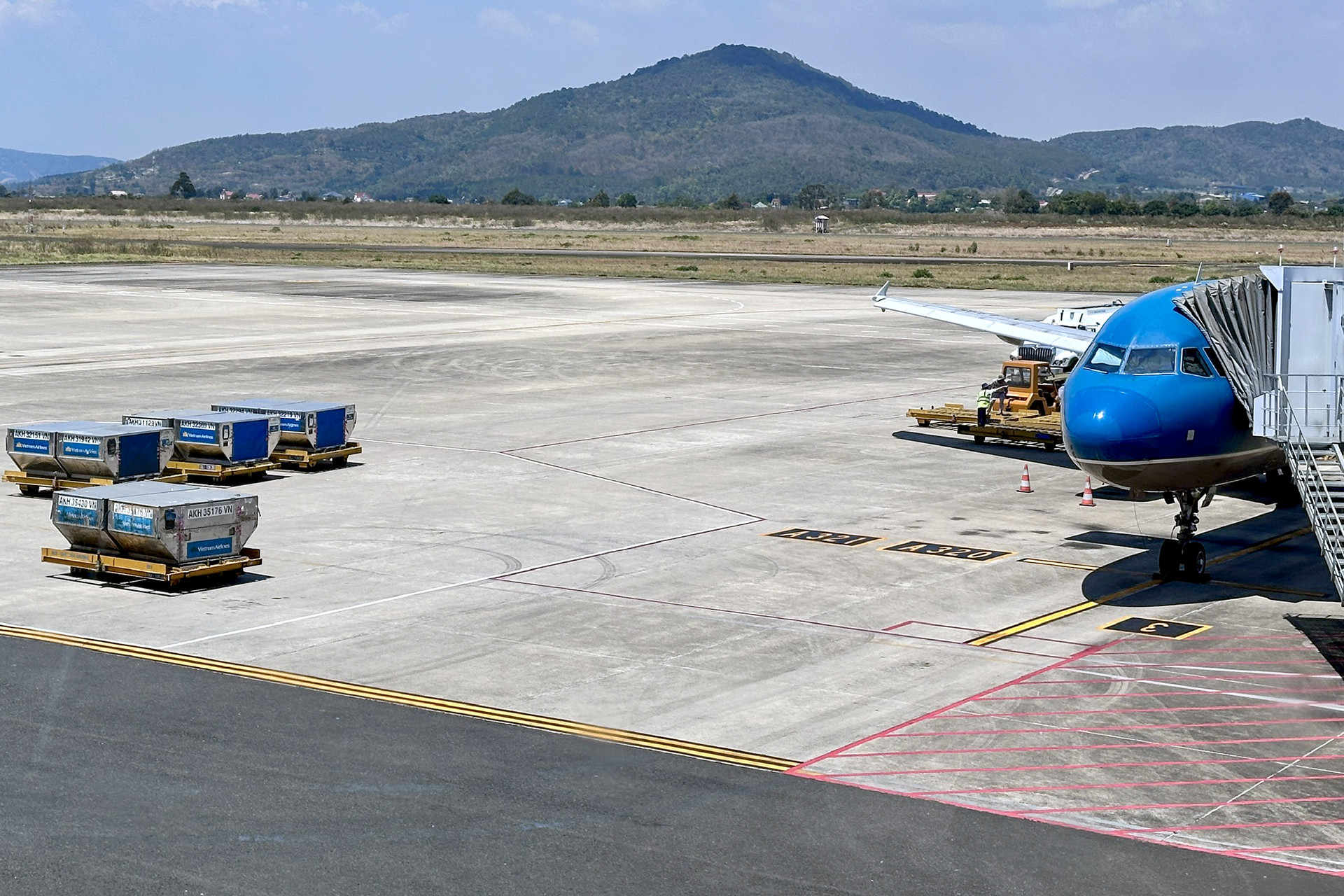
Lien Khuong Airport in Lam Dong Province will temporarily suspend operations for six months to implement a major runway and taxiway renovation project worth more than VND 1,045 billion (approximately USD 41.3 million).
The Lam Dong Provincial People’s Committee recently held a meeting to finalize the plan to temporarily close Lien Khuong International Airport for the upgrade. The project is led by Airports Corporation of Vietnam (ACV).
As part of the upgrade, the runway will be extended to 3,250 meters in length, widened to 45 meters, and equipped with new turn pads. Taxiways E1 and E2, along with the drainage system, lighting, signage, and arresting zones at both ends of the runway, will also be comprehensively renovated.
The provincial government has asked the investor to select a closure period that avoids the peak tourist season to minimize disruption for residents and local businesses. All preparations, including equipment, personnel, and materials, must be completed in advance to allow construction to begin immediately once the airport is closed.
Relevant departments and agencies have been tasked with closely coordinating with the investor to review investment readiness and propose optimal construction solutions.
Located in Lien Nghia Town, Duc Trong District, about 30 km from Da Lat City, Lien Khuong Airport was originally built in 1933 during French colonial rule and upgraded by the U.S. in 1956. In 1997, the runway was extended from 1,480 meters to 2,354 meters, meeting ICAO’s 3C airport standards.
Between 2003 and 2007, the airport was expanded and upgraded to 4D classification, enabling it to accommodate narrow-body aircraft like the Airbus A320 and A321.
Currently, Lien Khuong Airport serves around 2.5 million passengers annually, including numerous international visitors from South Korea, Thailand, and other countries.
According to the 2030 development plan, the airport will be upgraded to 4E classification to handle wide-body aircraft such as the Boeing 787 and Airbus A350. Its projected capacity is 5 million passengers and 20,000 tons of cargo per year.
After 2030, the runway will be further extended to 3,600 meters, and the airport's annual capacity will be raised to 7 million passengers. Infrastructure upgrades will be aligned with the development of Passenger Terminal T2, a cargo terminal, aircraft maintenance facilities, fueling stations, wastewater treatment systems, and more. By 2050, the airport is expected to cover a total area of approximately 340 hectares.
Xuan Ngoc